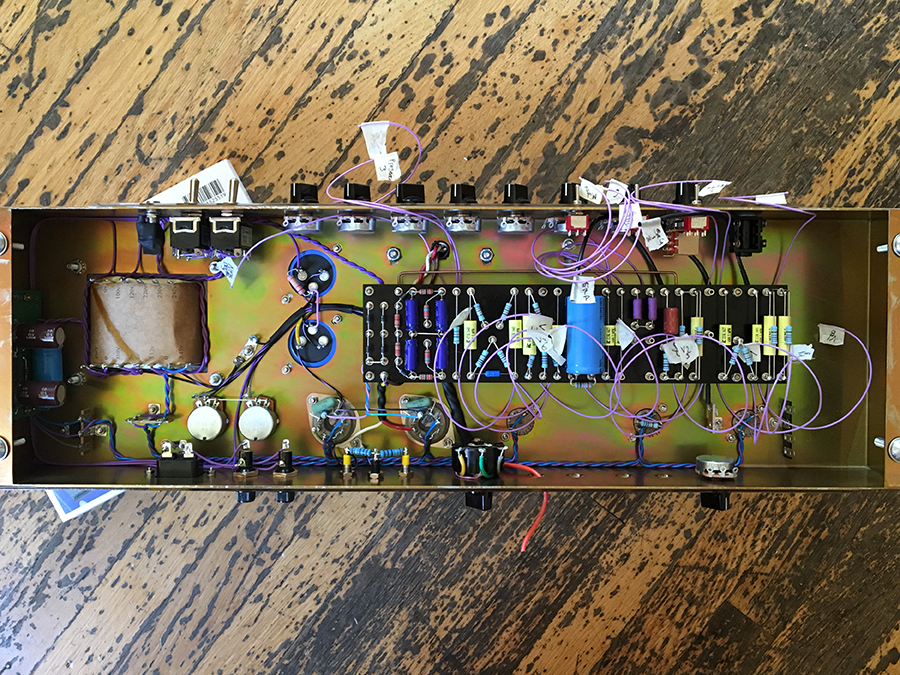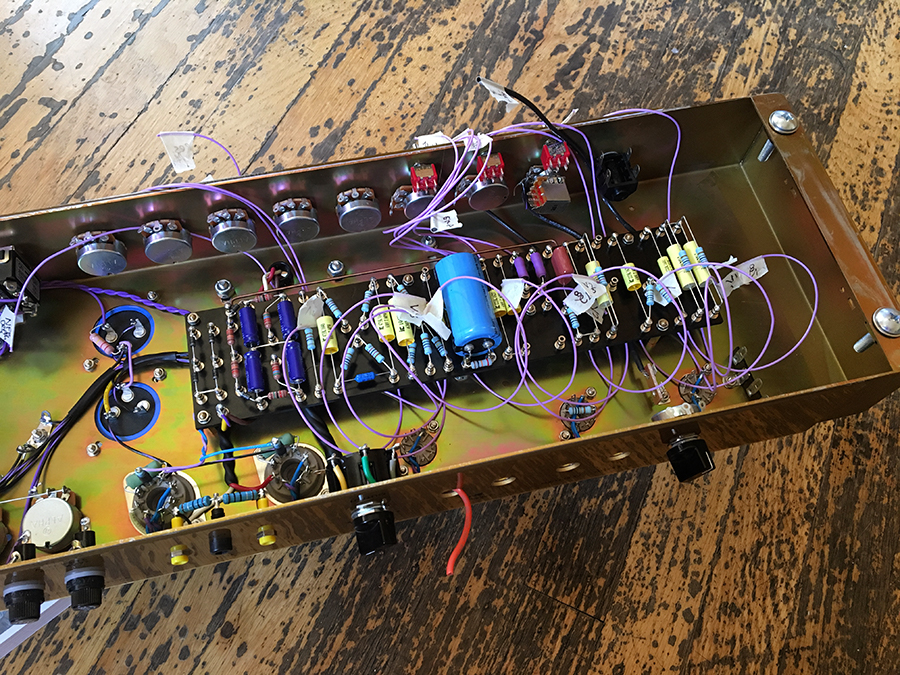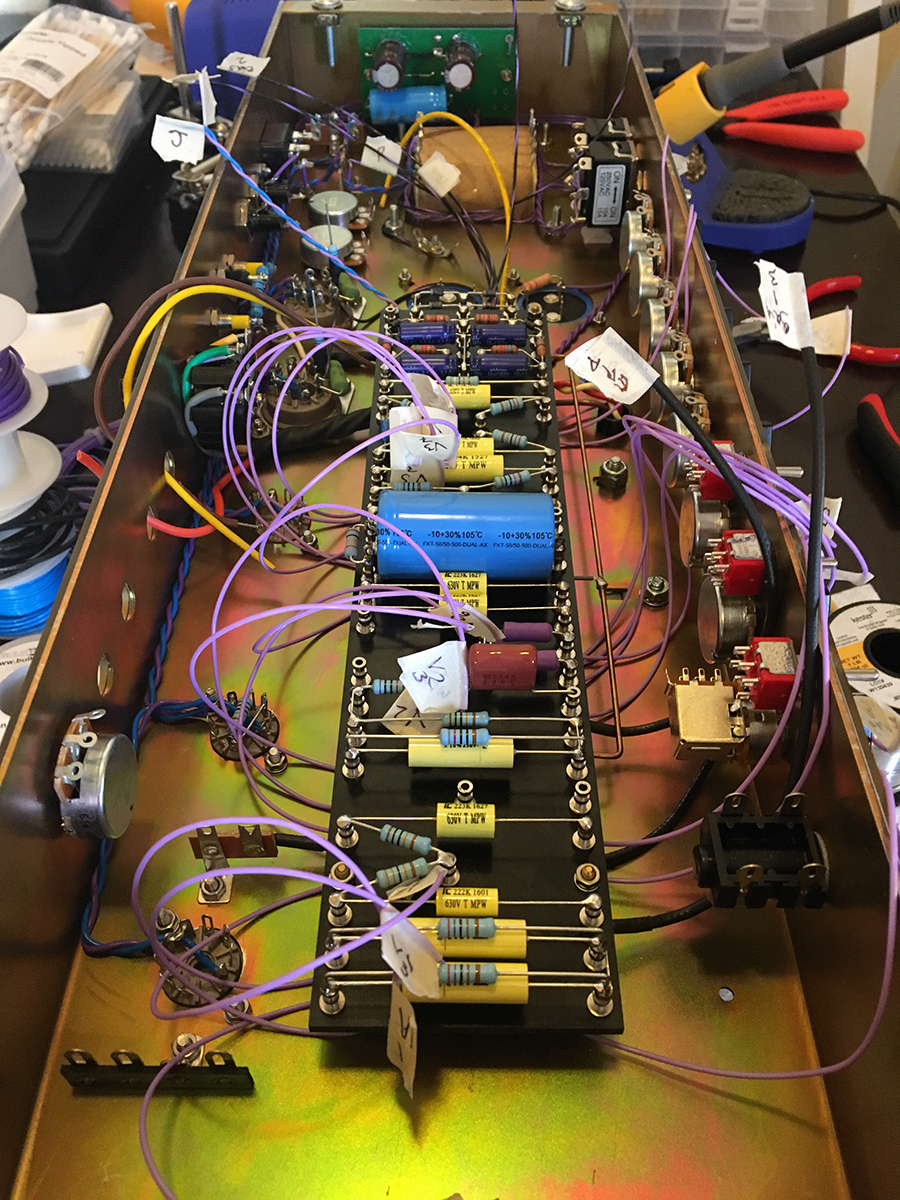Originally posted by mikepukmel
View Post
The reason for having more than one ground point could be due to wanting the input connectors grounded directly. In the fifties it was quite common in the US that small towns had their own AM radio station transmitting in the range of 500-1700 kHz, as FM stations were not nearly as widely used as they were in Europe at the time. If a strong, local AM radio station were present in the neighborhood, then it could easily be picked up by the external wiring to the guitar etc. Having the input connectors grounded directly to the chassis would be quite beneficial to help reduce interference problems, despite the potential for problems with ground loops. If the inputs were floating, you'd have to connect the cable shields to chassis ground at the input via a bunch of low-ish value capacitors. The caps should have a low impedance for RF yet a high impedance for audio and mains hum. This would be more expensive and less reliable due to the higher component count. So using the resources to get the grounding right would be beneficial with no downsides.
I would further speculate that the potential for AM radio interference was also the reason why Fender et al. used those very high value grid stopper resistors, noisy as they are, though that is probably a subject for a different thread. (This has probably been discussed at length before here on M-E-F.)






Comment